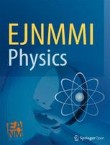Citation Impact 2023
Journal Impact Factor: 3.0
5-year Journal Impact Factor: 3.7
Source Normalized Impact per Paper (SNIP): 1.141
SCImago Journal Rank (SJR): 1.243
Speed 2023
Submission to first editorial decision (median days): 23
Submission to acceptance (median days): 149
Usage 2023
Downloads: 449,199
Altmetric mentions: 94
